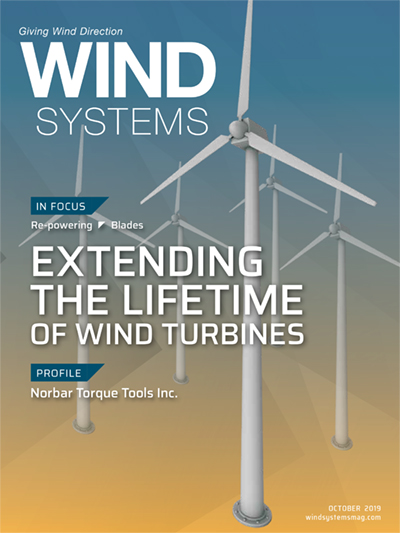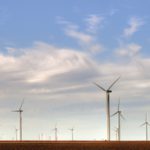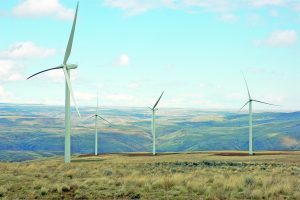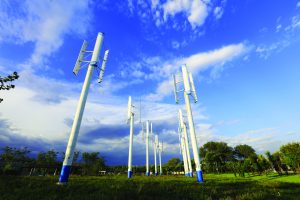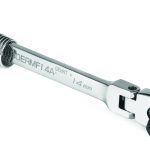Wind turbines have a planned service life of approximately 20 years. Nevertheless, it has been demonstrated that many turbines are able to operate beyond their design lives. In several instances, the lifetime of a wind farm may be extended through minor and low-cost repairs. In order to establish whether a wind turbine can continue to operate past its service life, a practical and analytical evaluation is carried out. In this article, TÜV SÜD explains in detail how the lifetime extension assessment is conducted, as well as the benefits of this analysis.

Wind-energy asset owners are confronted with critical business decisions as their wind farms approach the end of their operational lives. Should their turbines be decommissioned? Should they be replaced? Or can they remain in service beyond their design lives? The basic principles for assessing lifetime extension of a wind turbine have been specified by a work group created by the German Wind Energy Association [1].
The work group, formed by manufacturers, operators, technical experts, representatives from the authorities, and legal experts, has established the necessary technical requirements for ensuring continued operation in a safe and economically viable manner.
Ensuring the stability of a wind turbine is a key factor in the safety evaluation process. In particular, all the load-bearing components must be analyzed, i.e. from the rotor blades to the foundation, as well as the safety devices, the turbine control systems and the braking systems.
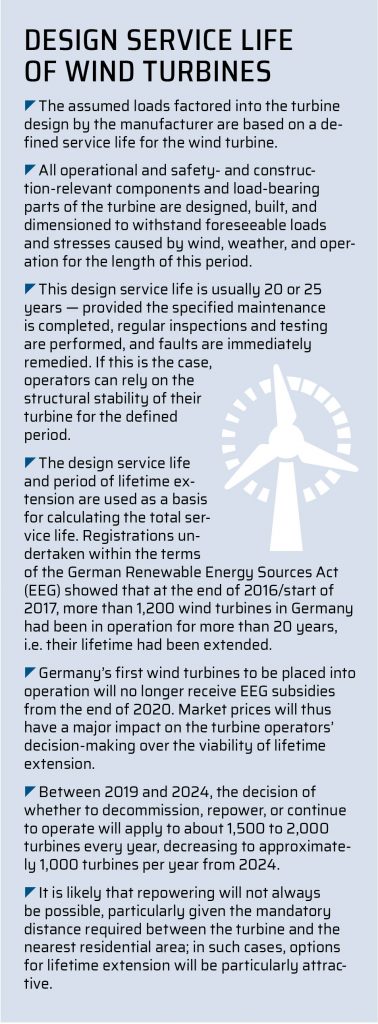 It is important to quantify the actual stresses and loads to which a turbine has been subjected during its operational life. This calculation is done by computer simulations that reflect both design conditions after type testing, as well as the actual operating conditions. In addition, the safety evaluation comprises an equipment inspection.
It is important to quantify the actual stresses and loads to which a turbine has been subjected during its operational life. This calculation is done by computer simulations that reflect both design conditions after type testing, as well as the actual operating conditions. In addition, the safety evaluation comprises an equipment inspection.
The lifetime extension assessment thus consists of two parts: an analytical evaluation and an on-site inspection. Following the analytical and practical assessments, wind-farm operators receive a status report highlighting the requirements necessary for extending the lifetime of the turbine. As a result, an accurate financial estimate of the costs involved can be generated. The report lists both opportunities and risks of continued operation and is an important tool in assisting owners with their business decisions throughout and beyond the service lives of their assets.
Timing
The lifetime extension assessment is usually carried out during the last year of validity of the operating permit, in order to determine the most recent conditions of the turbine. Wind-farm operators are responsible for arranging the inspection in a timely fashion and for presenting the relevant documentation. In the case of medium-term budget planning, or if divestment of the turbine is being considered, it may be advisable to perform the evaluation at an earlier point in time. In these particular instances, a physical inspection is not necessary. These preliminary results, which highlight the feasibility of continued operation and when specific components are likely to need replacement, may be incorporated at a later stage into a lifetime extension assessment.
Documents required and missing data
For the assessment of the wind turbine, both technical documentation and environmental operating conditions must be available. The potential duration of continued operation of the turbine is calculated based on this data. Required documentation includes the operating permit of the turbine, documents relating to its construction and commissioning, operating and yield data, repair, inspection and maintenance reports, and wiring and hydraulic diagrams. Moreover, a technical report carried out within the last year establishing the current condition of the rotor blades is required. In the case of missing data, such as technical documents and certificates, including documentation from the construction and commissioning phases, these can usually be obtained from the manufacturer. If this is not the case, comparisons with other turbines and assessments based on previous experience may be used.

Wind conditions
Wind conditions are an essential factor in the lifetime extension assessment. In order to calculate loads and stresses for the period of operation, data documenting average wind speeds, turbulence intensities, and extreme wind events for the previous 20 years are used. Operating data and data from the anemometer on the nacelle form the basis for this calculation. Should this data not be available for the entire period, long-term extrapolation may be performed using other data sets. In the case of a wind farm with a variety of capacity additions, turbulence is calculated for each individual turbine.
Analytical assessment
During the analytical assessment, operating conditions are compared with design conditions. Continued operation is favorable when the historical conditions are more benign than design conditions. In particular, the actual stresses and loads faced by a turbine are compared with the stresses and loads for which the turbine was manufactured. These can be simulated using software-based methods comparing historical wind conditions with design wind conditions. As in the technical part of the assessment, all load-bearing components contributing to the structural stability of the turbine are examined: the tower and foundation, screws and bolts, the load-bearing parts of the nacelle, the shaft, the hub, the rotor blades, the braking systems and the safety functions. Following the analytical assessment, a report is prepared highlighting any immediate measures required for continued operation and specifying the time remaining until design loads are reached. The two parts of the assessment are conducted in parallel and experts in the analytical and practical evaluation processes mutually support each other.
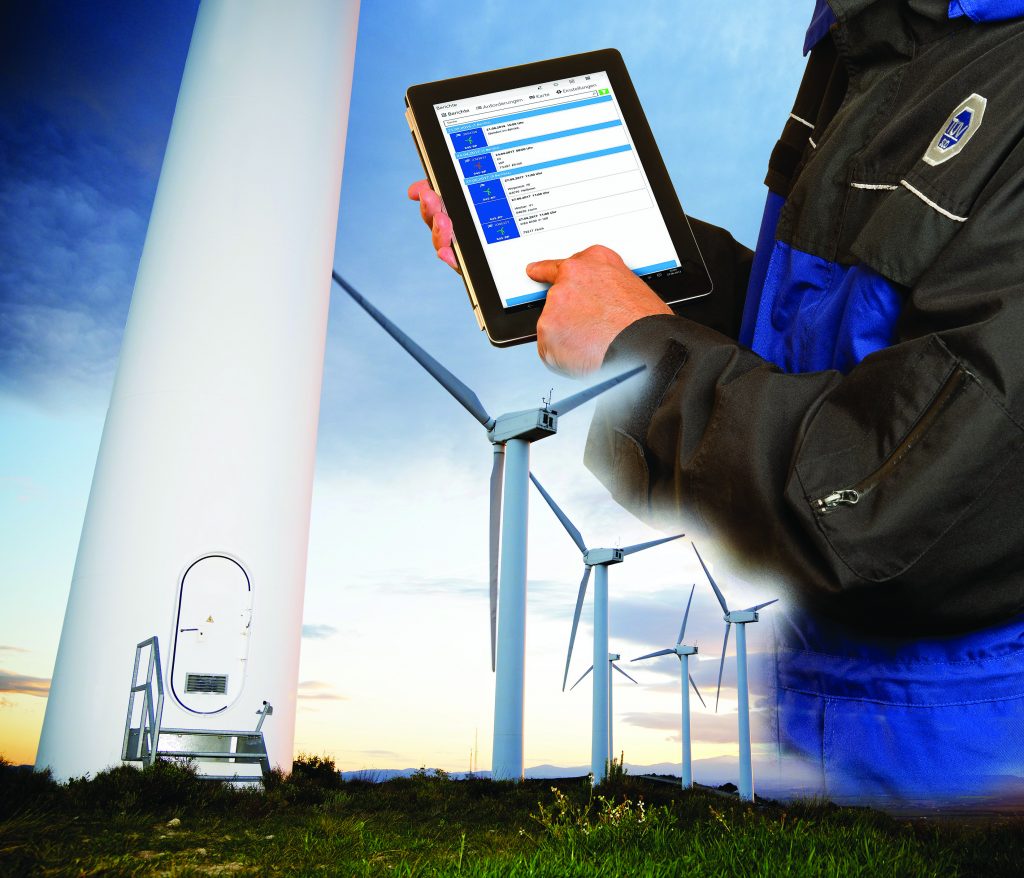
On-site inspection
In the practical part of the lifetime-extension assessment, the physical condition of the turbine is evaluated through an on-site inspection. The purpose of this examination is to document any damage to the equipment and any changes in the surrounding environment of the wind farm. In particular, all load-bearing and safety-relevant components are examined in detail. Maintenance records are checked, and the actual condition of the turbine is compared with the technical documentation. Inspectors look for signs of corrosion and visible cracks and listen for unexpected gearbox noises. Moreover, a detailed investigation of any weaknesses or flaws associated with a particular type of wind turbine is carried out. The conditions of the principle components of the turbine (the rotor blade, the gearbox, the supporting structure, and the foundation) are assessed. In the event of significant damage that would compromise the safety of continued operation, immediate shutdown of the turbine could be recommended. However, in most instances, the damage discovered is relatively minor and generally caused by material fatigue and weathering. Rotor blades frequently need repairing, as they are usually subject to small cracks, erosion, or flaking. Other issues that can easily be solved include corrosion or worn cables. Finally, any changes in the surrounding environment, such as expansions in neighboring sites, must be taken into account when calculating turbulence intensities.
Conclusions
The results of lifetime extension assessments conducted by TÜV SÜD indicate that most turbines can continue to operate in a safe and economically viable way for several years beyond their defined service lives. Wind conditions at the site may have resulted in lower loads than originally estimated. As a result, the supporting structure of the turbine is often free from significant damage. Therefore, in many cases, the repairs needed to extend the lifetime of the turbine are generally minor and cost-effective. In many instances, the bolts attaching the rotor blades to the hub need replacing, as they tend to reach their design limits more quickly. Replacing these bolts is a relatively straightforward procedure that requires only a limited period of downtime.

Lifetime extension
As wind farms age, there is a higher chance of safety-relevant damage caused by material fatigue. Nevertheless, experience gathered by TÜV SÜD shows that many turbines still have service life reserves beyond their design lives. Conducting a lifetime extension assessment helps managers and operators to determine whether continued operation is possible and to plan for the future of their assets. This assessment is also recommended in cases where the extended lifetime is to be relatively short if no further action were taken. The results of the lifetime extension assessment would be used to forecast the repair and maintenance costs likely to be incurred during the remaining life of the turbine and to plan maintenance shutdowns accordingly. Finally, the lifetime extension report is generally required by service providers after the end of the design life of the turbine or when applying for extension of insurance policies.
Reference
- German Wind Energy “Grundsätze für die Durchführung einer Bewertung und Prüfung über den Weiterbetrieb von Windenergieanlagen (BPW) an Land” (Principles of Performance of Assessment and Examination for Lifetime Extension of Onshore Wind Turbine Generators (Bewertung und Prüfung über den Weiterbetrieb von Windenergieanlagen, BPW))
















